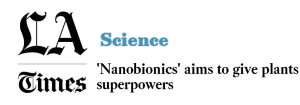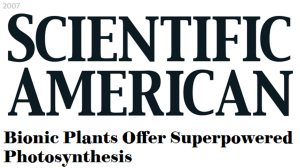Research Summary
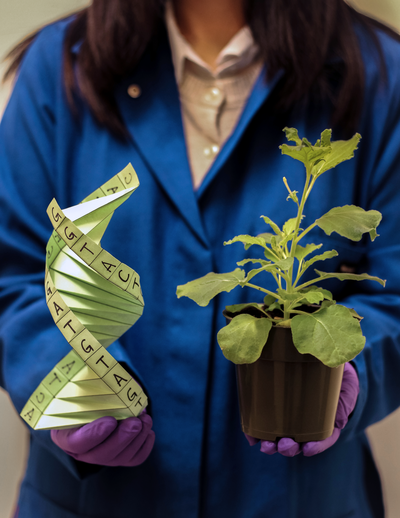
Genetic engineering of plants is at the core of sustainability efforts, natural product synthesis, and agricultural crop engineering. However, the plant cell wall is often a barrier that limits the ease and throughput with which exogenous biomolecules can be delivered to plants.
Current biomolecule delivery methods to plants suffer from host range limitations, low transformation efficiencies, tissue damage or unavoidable DNA integration into the host genome, which yields a genetically-modified organism (GMO). Our lab explores the passive delivery of DNA, RNA, and protein cargoes to plants to enable high-efficiency genetic engineering of our plants and crops without foreign DNA integration. We develop these goals at the interface of nanomaterials and plant biotechnology, which is an emerging and exciting area of investigation.
The unique optical and tunable physical properties of nanomaterials can be leveraged to overcome the limitations of traditional imaging and delivery methods for plant systems.
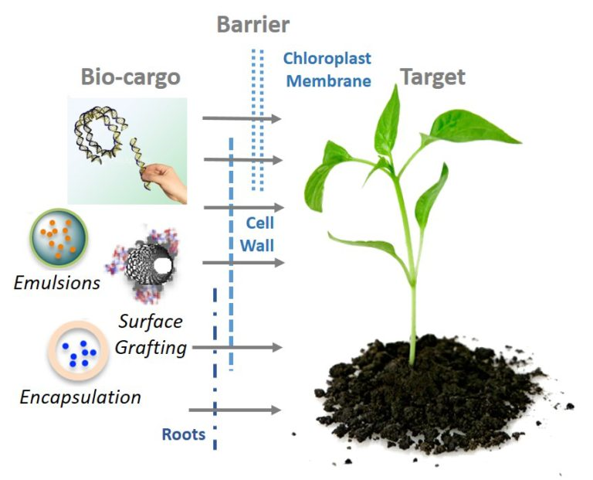
.
Plasmid DNA delivery to plants
Publication Highlight: Demirer et al. Nature Nanotechnology (2019)
We have developed an efficient diffusion-based biomolecule delivery platform for genetic transformation of several agriculturally-relevant plant species with a suite of pristine and chemically-functionalized carbon nanotubes. Efficient DNA delivery and strong protein expression without transgene integration is accomplished in mature Nicotiana benthamiana, Eruca sativa (arugula), Triticum aestivum (wheat) and Gossypium hirsutum (cotton) leaves and protoplasts.

.
RNA delivery to plants
Publication Highlight: Demirer et al Science Advances (2020)
Our lab has accomplished RNA delivery with a variety of different carrier tools: carbon nanotubes, DNA nanostructures, and gold nanoparticles. We find that small interfering RNA (siRNA) can be delivered to mature Nicotiana benthamiana leaves with carbon nanotubes and effectively silence a gene with 95% efficiency, with ongoing work in using this platform to deliver synthetic guide RNA (sgRNA) that can be useful for CRISPR-based genome editing.

Publication Highlight: Zhang et al. PNAS (2019)
We also use DNA origami and DNA nanostructures to study the transport phenomena of nanoparticles in plant tissues and into plant cells, with a specific focus on transport across the plant cell wall. These studies systematically assess the impact of nanoparticle geometry, size, and tensile strength on in-plant transport, with proof-of-principle demonstration of their ability to deliver siRNA molecules to mature plant leaves.
Each nanostructure can be programmed to attach siRNA molecules to unique loci along the nanostructure, whereby the appended siRNA targets the silencing of a GFP gene.
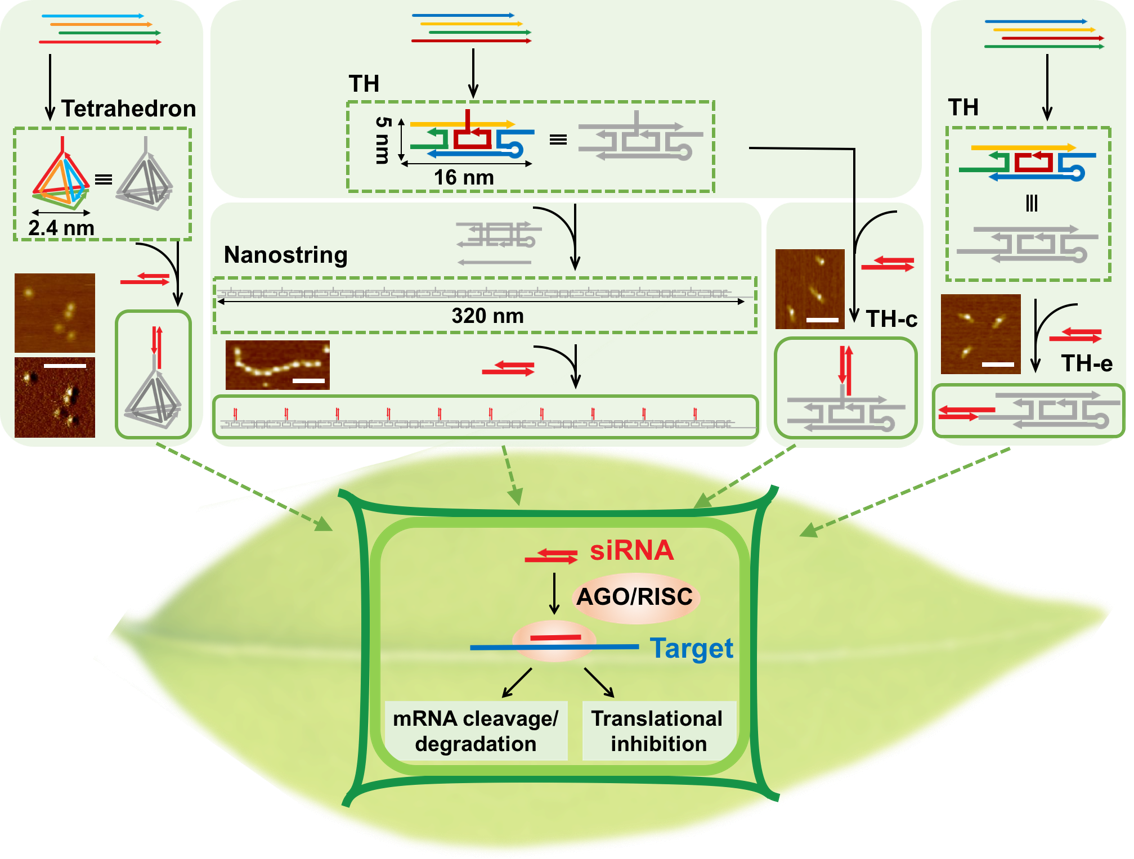
Untreated control leaves of GFP Benthamiana show strong GFP fluorescence, as expected, due to the constitutive expression of GFP in the transgenic plant. Conversely, leaves infiltrated with siRNA functionalized DNA nanostructures showed varying degrees of reduced GFP fluorescence.

We also tested the transience of the nanostructure-enabled siRNA mediated silencing. Confocal imaging and western plot reveal that GFP levels for all leaves are recovered to the same level as non-infiltrated leaves by the 7th day following the siRNA-nanostructure infiltrations.

This study is important because it highlights the features of merit important for nanoparticle transport in plants. Specifically, this study demonstrates that particle size below 20 nm, and also high nanoparticle stiffness, are both features that together enable better nanoparticle transport through plant tissues and into plant cells.
.
Protein delivery to plants
Publication Highlight: Wang et al. Nature Communications Biology (2023) Our lab has developed a fluorescence complementation-based assay that unambiguously allows quantification of protein delivery efficiency to plant cells, on a per-cell basis. This assay, called Delivered Complementation In Planta (DCIP) – see Addgene plasmids – allowed us to discover that covalent conjugation of cell penetrating peptides to protein cargoes enables non-biolistic protein delivery to mature plant cells.
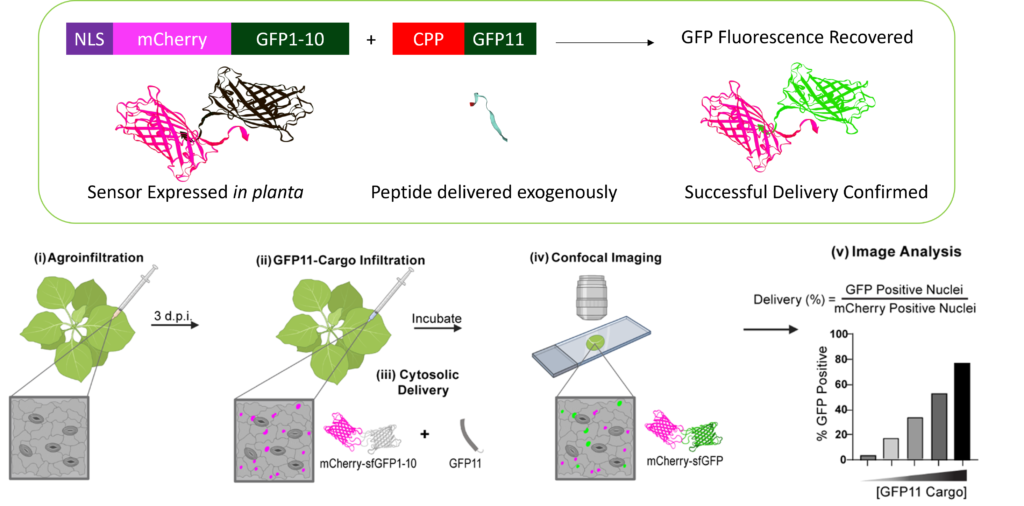
With this technology, we have successfully delivered small peptides, and larger proteins including fluorescent reporters like mCherry and transcription factors like WUSCHEL, a homeodomain transcription factor necessary for plant cellular totipotency and differentiation. We have also successfully delivered proteins tagged by cell penetrating peptides to a broad range of plant tissues including plant leaves, seedlings, and callus tissues.
.
See press coverage of our work interfacing nanomaterials with plants:
.
.
.
.
.
Scientists: Dabin Yim, Kevin Ao, Roxana Coreas, Shoichi Nishitani, Henry Squire, Liz Voke, Sophie Tomatz.
Select Publications: Demirer et al. Nature Nanotechnology (2019) || Zhang et al. PNAS (2019) || Demirer et al. Nature Protocols 2019 || Landry et al. Nature Nanotechnology 2019 || Demirer et al. Science Advances 2020 || Zhang et al. Nature Protocols 2020 || Demirer et al. Nature Nanotechnology 2021 || Goh et al. Nature Nanotechnology 2022 || Wang et al. Nature Communications Biology 2023




